


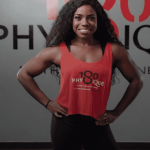
Umo and James C. are a beautiful, healthy, and fit family couple. “A healthy lifestyle” is not an empty phrase for them. Both have been involved in sports their entire lives and have enthusiastically helped other people achieve enviable physical and health results. With their adorable three kids, the whole family is a wonderful example to the world.
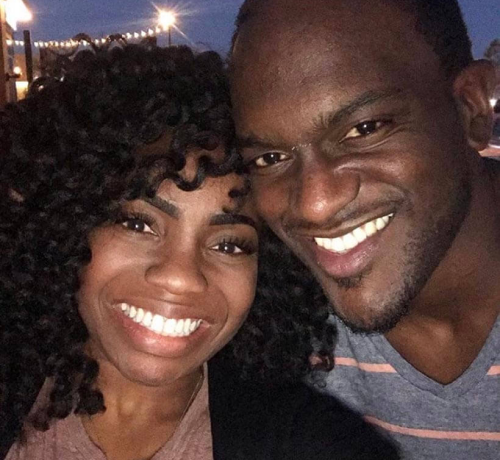
Umo is a registered dietitian and personal trainer. She owns a strength and conditioning facility where she works with “athletes, fitness enthusiasts, and people that are just interested in improving their health and wellness,” she says.
She started her path towards professional sports back in high school, although not necessarily with the “greatest eating habits,” she says with a smile, “which is pretty normal for a high school athlete.”
I was always interested in nutrition and fitness, and when I knew that I could do it on a professional level — teach others and learn about it — I was very interested in pursuing it.
Her partner James is a certified strength and conditioning specialist for the National Strength and Conditioning Association (NSCA). His specialty is long-term athletic development with student athletes ages 9 to 18.
His path to his current self began even earlier than Umo’s—back in middle school—and ever since, he’s been consistently involved in sports. “I played American football from age 12 to college, so until 22–23 years old. And I played basketball [in] middle school, aged around 12 to 15. And then, [in] high school, I did track and field.”
“And we didn’t have the resources,” James continues, “[to] really help us train effectively in terms of how to monitor our load and how to see what we’re doing affects you the next day (the recovery and everything). We [didn’t] have the resources [to afford], like someone who had certifications in strength and conditioning. And I really wanted to be able to provide that type of access or opportunity to kids that are in middle school, secondary school, [and] primary school; so that they can have better chance[s] to be successful in sporting endeavors. Also, a lot of them have better chance[s] to become good citizens.”
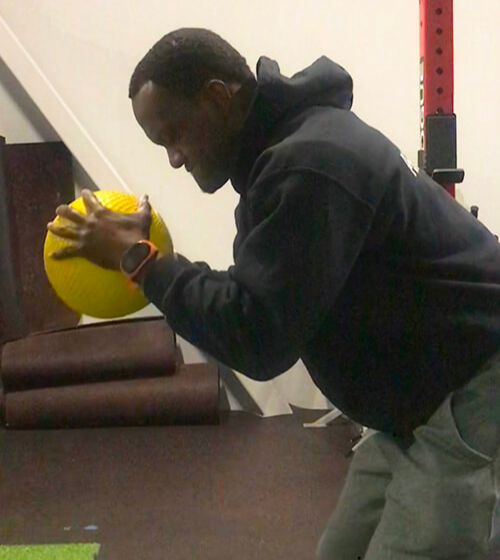
Taking sports as seriously as they do, Umo and James have always looked for tools to understand their own capabilities and performance milestones better and to give even more data-driven advice to their clients. They have both gone through a number of gadgets and wearables chasing the data.
“I’ve had different watches that track your steps or track how far you’re running and how many calories you’re associating with [what],” Umo says, “[and] also apps for tracking several different things that are similar—there’s been a lot there—but not really anything that was my kind of interest. [Then] I found out about the HEALBE device.”
“Technology has been so devoted to distraction,” James comments on his old frustration with gadgets. “Previously, I used a different device that was connected to my phone sending me text messages, emailing, phoning or whatnot, even if it was just vibrating—this was all really distracting. The GoBe is a minimal distraction. I really enjoy that part. I really enjoy that the only times it’s gonna let me know something is if it needs to let me know something, like ‘Hey, you need to get a drink of water’ or ‘Hey, you’re in an emotional state right now.’”

Taking sports as seriously as they do, Umo and James have always looked for tools to understand their own capabilities and performance milestones better and to give even more data-driven advice to their clients. They have both gone through a number of gadgets and wearables chasing the data.
“I’ve had different watches that track your steps or track how far you’re running and how many calories you’re associating with [what],” Umo says, “[and] also apps for tracking several different things that are similar—there’s been a lot there—but not really anything that was my kind of interest. [Then] I found out about the HEALBE device.”
“Technology has been so devoted to distraction,” James comments on his old frustration with gadgets. “Previously, I used a different device that was connected to my phone sending me text messages, emailing, phoning or whatnot, even if it was just vibrating—this was all really distracting. The GoBe is a minimal distraction. I really enjoy that part. I really enjoy that the only times it’s gonna let me know something is if it needs to let me know something, like ‘Hey, you need to get a drink of water’ or ‘Hey, you’re in an emotional state right now.’”
The HEALBE GoBe smart band got their attention by occasionally showing up in their family network (where it ended up staying).
My brother’s friend in Houston got it at the top of this year [2019],” Umo says as she recollects her first acquaintance with the GoBe. “He did extensive research and came across this device. When he told my brother about all it does, he said ‘Man, it’s actually really accurate.’ My brother told me because he thought that this might be something that I’d be interested in trying myself or recommending my clients that I work with to try. And I was like, ‘Sure, anything I can do to enhance my clients’ experiences and contribute to their success.
“When she [Umo] first presented it to me,” James comments, “I was, like ‘Hey, let’s go take a look at it,’ ‘cause I wanted to know how I was sleeping, how many calories I was consuming and burning, and then my steps and my stress levels. So we went onto the website and she ordered it.”
“And then, when we got it, I was pleasantly surprised,” Umo adds.
It was just another level of accountability that I’ve never experienced before,” Umo says as she remembers her interaction with the GoBe, “because of how busy I am with being a business owner and mom and everything else in between.
“It’s easy, as much as you tell people about how to improve their habits, to definitely lose sight of yours,” referring to her roles as a fitness consultant and mom. Umo appreciated primarily (1) her calorie intake charts she could look from the day prior to see where her macronutrients were at, (2) the “Drink” alert popping up on the bracelet when her hydration levels were low, and (3) the “Emotion” alerts at stressful points. “Just little things like that were so helpful.”
“I actually have an intern here, and I was telling him that I hate tracking,” Umo continues. “It’s not my favorite thing to do. But I do it. And I definitely encourage others to do it. But I do realize—back again to people that are super busy—it’s just not something that’s always a top priority, and it’s not always the best option for them.”
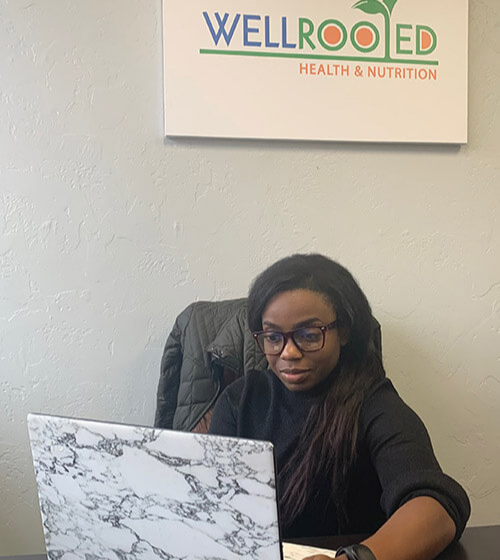
It was just another level of accountability that I’ve never experienced before,” Umo says as she remembers her interaction with the GoBe, “because of how busy I am with being a business owner and mom and everything else in between.

“It’s easy, as much as you tell people about how to improve their habits, to definitely lose sight of yours,” referring to her roles as a fitness consultant and mom. Umo appreciated primarily (1) her calorie intake charts she could look from the day prior to see where her macronutrients were at, (2) the “Drink” alert popping up on the bracelet when her hydration levels were low, and (3) the “Emotion” alerts at stressful points. “Just little things like that were so helpful.”
“I actually have an intern here, and I was telling him that I hate tracking,” Umo continues. “It’s not my favorite thing to do. But I do it. And I definitely encourage others to do it. But I do realize—back again to people that are super busy—it’s just not something that’s always a top priority, and it’s not always the best option for them.”
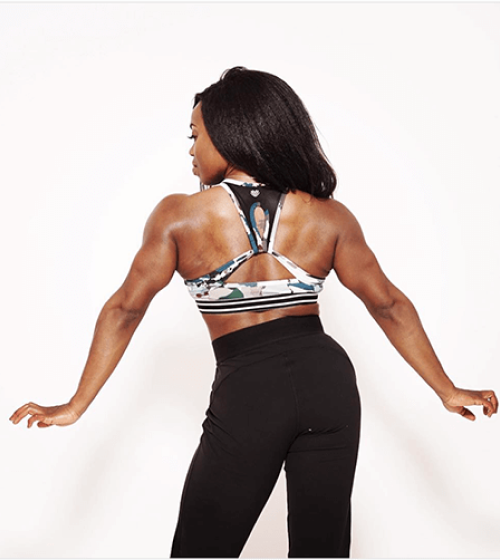
“So to be able to have it there and simply look at it is amazing,” referring specifically to the GoBe’s calorie intake feature. “I think it’s really nice, just because you can always recall some of the things [high-calorie food] you had for the day and look at [them] over time, look at what your averages are.”
For me, proteins are always hard to achieve,” Umo continues, “because I have different food intolerances. So it definitely kept me on track with ‘Okay, your proteins are a little bit lower, let’s make that more of a priority moving forward and figure out how to incorporate maybe some supplementation in your meals.

“So to be able to have it there and simply look at it is amazing,” referring specifically to the GoBe’s calorie intake feature. “I think it’s really nice, just because you can always recall some of the things [high-calorie food] you had for the day and look at [them] over time, look at what your averages are.”
For me, proteins are always hard to achieve,” Umo continues, “because I have different food intolerances. So it definitely kept me on track with ‘Okay, your proteins are a little bit lower, let’s make that more of a priority moving forward and figure out how to incorporate maybe some supplementation in your meals.
“I typically burn over 3,000 calories [a day],” James says, sharing his experience with the GoBe calorie in-and-out feature. “That’s normal. And there are a lot of days when, once I finish training and sync the [HEALBE GoBe] app to my phone, it says ‘minus seven hundred something calories.’ That made me more willing to eat more, even if it’s, like, kind of late in the evening.
“I typically burn over 3,000 calories [a day],” James says, sharing his experience with the GoBe calorie in-and-out feature. “That’s normal. And there are a lot of days when, once I finish training and sync the [HEALBE GoBe] app to my phone, it says ‘minus seven hundred something calories.’ That made me more willing to eat more, even if it’s, like, kind of late in the evening. At such a [calorie] deficit, I know the next day I’m not going to be in a good state. Then I have peanut butter, a sandwich, a protein shake, a handful of nuts with some dry raisins, or something like that. And I am more willing to consume food later. I know the calories are only going to increase at night.”
Another benefit Umo and James got with their GoBe was better stress management, which was super important to them with all the things keeping them busy.
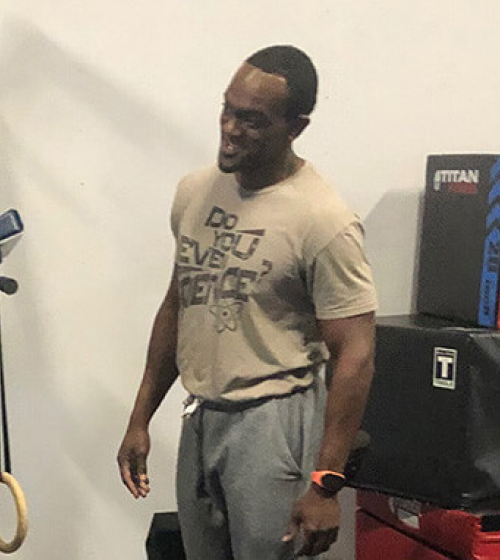
At such a [calorie] deficit, I know the next day I’m not going to be in a good state. Then I have peanut butter, a sandwich, a protein shake, a handful of nuts with some dry raisins, or something like that. And I am more willing to consume food later. I know the calories are only going to increase at night.”

Another benefit Umo and James got with their GoBe was better stress management, which was super important to them with all the things keeping them busy.
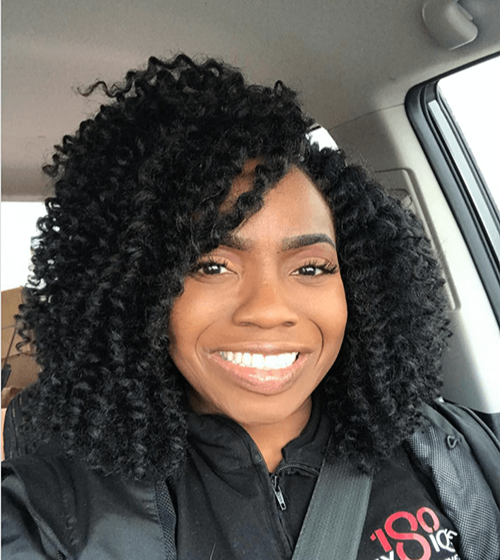
“I’ve definitely been doing a lot more breathing techniques,” Umo says. “When I’m driving, I’m, like ‘Okay, my mind’s going a thousand miles a minute—that’s an opportunity for me to take 4–5 deep breaths.’ I just try to get myself [into] that sympathetic state with little things like that or by knowing when to end the day or just take a break. I think this smart band is really helpful for that. As soon as you get those [emotion] alerts, you can definitely do it and do it consistently.”
“What I found, too, is that emotional triggers for me are actually different than what I thought,” James adds, commenting on the GoBe’s emotional state and stress level features. “The alerts last, like ‘emotion’, ‘emotion’, ‘emotion’ at different time[s] than I would expect them to. It’s really important. It helps me get a hold of my breathing, take a step back, or go for a walk. In a high state of arousal, especially if I’m training and getting excited there while explaining something, like, some drill that we’re trying to do, I’d tell myself ‘Oh okay, slow down, breathe.’ And the GoBe allows me to lower my nerves and helps me calm down.”

“I’ve definitely been doing a lot more breathing techniques,” Umo says. “When I’m driving, I’m, like ‘Okay, my mind’s going a thousand miles a minute—that’s an opportunity for me to take 4–5 deep breaths.’ I just try to get myself [into] that sympathetic state with little things like that or by knowing when to end the day or just take a break. I think this smart band is really helpful for that. As soon as you get those [emotion] alerts, you can definitely do it and do it consistently.”
“What I found, too, is that emotional triggers for me are actually different than what I thought,” James adds, commenting on the GoBe’s emotional state and stress level features. “The alerts last, like ‘emotion’, ‘emotion’, ‘emotion’ at different time[s] than I would expect them to. It’s really important. It helps me get a hold of my breathing, take a step back, or go for a walk. In a high state of arousal, especially if I’m training and getting excited there while explaining something, like, some drill that we’re trying to do, I’d tell myself ‘Oh okay, slow down, breathe.’ And the GoBe allows me to lower my nerves and helps me calm down.”
Another function James uses constantly is the sleep monitoring.
“It has also been really beneficial for me,” James comments, “because we have an infant. And when he wakes up in the middle of the night, typically I get up. And just kind of having an idea of ‘This is what your actual sleep state was, this is when your REM-sleep was, this was your level of anxiety while sleeping, this is when it spiked’—really kind of having an understanding versus, say, ‘Oh, I don’t freak out’—is very important. That function made me more aware of the time that I go to sleep. I also use HRV [heart rate variability], and then my score with the efficiency of my sleep kind of make sense. And I make a note: ‘Okay, I need to make sure I sleep earlier tomorrow or tonight—make sure I can get as many things in place to go to sleep earlier.’”
True fitness enthusiasts, James and Umo work really hard, sometimes almost rest-free, investing most of their time and knowledge into their trainees. At the same time, they’re trying to raise their own three kids in the best environment they can.
With James and Umo’s busy schedule, every once in a while, all three of their kids happen to find themselves at either their mom’s strength and conditioning facility or their dad’s training one. And all of them absolutely love those moments.
They like going to our training facilities and setting up their own little games,” James says. “Sometimes I take them up there just so they can play around: to pull out a pile of boxes and hurdles and have fun with. Because that environment is also and ultimately going to be for them one day, for them and their little friends. And they enjoy the environment. At this point in time, they’re getting to the understanding [of] what that is giving to them. Our daughter, in particular, walks [up] to me every once in a while and says, ‘Daddy, would you train me? Will you let me go training?’ She really enjoys that now. And then our son is trying to move in that direction to be involved in gymnastics, and he enjoys that too.
“Right now, they’re not participating in team sporting activities,” James admits. “They’re still a bit young for that, but they’re learning the fundamentals of all sports.”
“Being so young,” Umo says, “they don’t really know what’s going on. They just think that we’re always jumping in the car, going here and going there. But as they’re getting older, especially our oldest two—when we’re working with natural bodybuilders or whoever we’re doing posing sessions with—they definitely love fitness and they’re excited about what we do. And that’s really nice to know, that they’re basically gonna be raised in a healthy environment.”